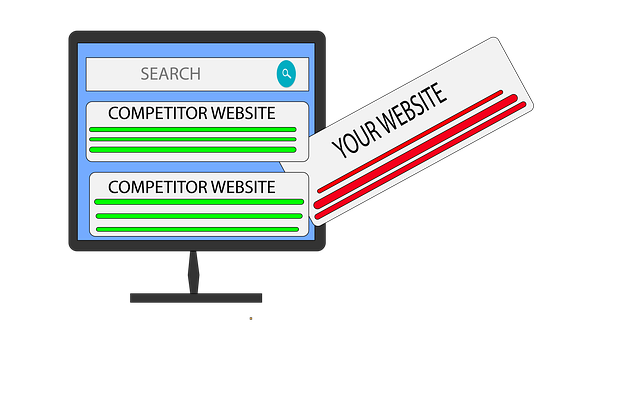E-commerce website security is paramount for building customer trust and ensuring long-term success. Key measures include implementing robust encryption protocols like SSL/TLS, utilizing secure coding practices to prevent threats like SQL injection and XSS, and employing two-factor authentication (2FA) and multi-factor authentication (MFA). A well-designed e-commerce website incorporates these features seamlessly, using secure hosting environments, regular software updates, and intuitive user interfaces. Prioritizing security enhances brand perception and drives growth in the competitive digital marketplace by fostering customer satisfaction and loyalty.
In today’s digital landscape, secure e-commerce websites are essential for fostering trust among customers. With a growing number of online transactions, understanding and implementing robust security measures is crucial for both businesses and consumers. This article explores vital aspects of e-commerce website security, including design strategies, authentication protocols, data encryption, payment gateway safety, regular updates, patch management, and user education. By delving into these key areas, we aim to guide businesses in creating a seamless yet secure online shopping experience through effective ecommerce website design.
Understanding E-commerce Website Security: A Foundation for Trust

E-commerce website security is more than just a technical requirement; it’s a cornerstone of building customer trust and ensuring long-term success. At its core, understanding the security landscape of an ecommerce site means recognizing the various vulnerabilities that can expose sensitive data, such as credit card details and personal information. A robust security framework involves implementing encryption protocols like SSL/TLS to protect data in transit, as well as utilizing secure coding practices to fortify against common threats like SQL injection and cross-site scripting (XSS).
Ecommerce website design plays a pivotal role in this equation. A well-designed site shouldn’t just be aesthetically pleasing; it should incorporate security features seamlessly. This includes using secure hosting environments, regularly updating software to patch known vulnerabilities, and employing two-factor authentication for added user protection. By prioritizing these aspects, businesses can create an environment where customers feel safe transacting online, fostering a positive perception of the brand and setting the stage for sustained growth in the competitive digital marketplace.
The Role of Robust Website Design in Enhancing Security

A well-designed ecommerce website isn’t just aesthetically pleasing; it’s a crucial component in enhancing security for online businesses and their customers. Secure website design incorporates various elements that protect sensitive data like customer information and payment details from potential threats. From using HTTPS encryption to ensure secure communication, to implementing robust authentication measures and regular security updates, a thoughtful design can significantly reduce the risk of cyberattacks.
Additionally, effective ecommerce website design employs subtle yet powerful visual cues to guide users through the checkout process, minimizing errors and enhancing trust. A clean layout, clear call-to-actions, and intuitive navigation not only improve user experience but also make it harder for malicious actors to exploit vulnerabilities. This dual focus on security and usability is essential for building a secure online environment that fosters customer confidence in making transactions.
Implementing Strong Authentication Protocols

In the realm of secure e-commerce websites, implementing robust authentication protocols is a cornerstone of customer trust and data protection. An ecommerce website design that prioritizes security ensures that each user interaction is safeguarded against unauthorized access. This involves employing advanced encryption methods for all sensitive data transactions, validating user identities through multi-factor authentication (MFA), and regularly updating security measures to counter emerging threats.
Beyond these technical safeguards, a robust authentication system enhances the overall user experience by reducing friction during login processes. Seamless and secure logins encourage customers to complete purchases without hesitation, thereby boosting conversion rates. For e-commerce businesses, combining strong authentication protocols with a well-designed website interface fosters a seamless and secure shopping journey, solidifying customer satisfaction and loyalty.
Encrypting Data: Protecting Customer Information

In the realm of e-commerce website design, data encryption plays a pivotal role in safeguarding customer information. As online transactions become the norm, ensuring the security of sensitive data is paramount. Encryption converts plain text data into unreadable code, protecting it from unauthorized access during transmission and storage. This process is essential for building trust with customers, as it prevents malicious actors from intercepting credit card details, login credentials, or personal information.
A secure e-commerce website incorporates encryption technologies like SSL/TLS protocols, which encrypt data exchanged between the server and user devices. This ensures that even if there’s a data breach, the stolen information remains useless to hackers without the decryption key. By implementing robust encryption measures, businesses can assure customers that their transactions are safe, fostering confidence in their brand and encouraging online shopping.
Secure Payment Gateways: Facilitating Safe Transactions

Secure Payment Gateways play a pivotal role in fostering trust and ensuring the safety of transactions on an e-commerce website design. These gateways act as intermediaries, facilitating the transfer of financial information between the merchant and the customer’s bank or payment provider. By encrypting sensitive data using advanced security protocols like SSL/TLS, they protect against malicious attacks and data breaches.
When implementing secure payment gateways, e-commerce website designers should consider features such as tokenization, which replaces cardholder data with a unique token, further enhancing data protection. Additionally, 3D Secure authentication adds an extra layer of security by requiring customers to verify their identity during checkout, significantly reducing fraud risks. These measures contribute to creating a seamless yet secure shopping experience for online users.
Regular Updates and Patch Management: Staying Ahead of Threats

In the dynamic landscape of e-commerce, keeping your website secure is paramount. A key pillar in this security arsenal is regular updates and patch management. Just like a fortress needs constant repairs to ward off invaders, an ecommerce website design must be continually updated to defend against emerging cyber threats. Hackers are always devising new ways to exploit vulnerabilities, so staying on top of software updates that patch these weaknesses is crucial.
By integrating timely updates for all applications and systems, you fortify your site’s defenses. This proactive approach ensures your ecommerce platform remains robust, protecting sensitive customer data and maintaining the integrity of your online business. Regular patching isn’t just about preventing attacks; it’s also about keeping your website running smoothly, with enhanced performance and improved user experience.
User Education: Empowering Customers to Spot Potential Risks

In today’s digital age, where e-commerce websites are a staple for businesses worldwide, user education plays a pivotal role in fostering a secure online shopping environment. Customers must be empowered to recognize potential risks and security threats that could compromise their personal information and financial details. Through educational initiatives, such as informative blogs, tutorials, and interactive guides, website developers can teach users about common e-commerce scams, phishing attempts, and malicious practices.
By arming customers with knowledge, they become an essential line of defense against cybercriminals. Educated users can scrutinize website security features, verify SSL certificates, and recognize secure payment gateways, thereby ensuring a safer online experience. This proactive approach not only protects individuals but also strengthens the overall integrity of the e-commerce industry, fostering trust among consumers and encouraging them to engage in digital transactions with confidence.
